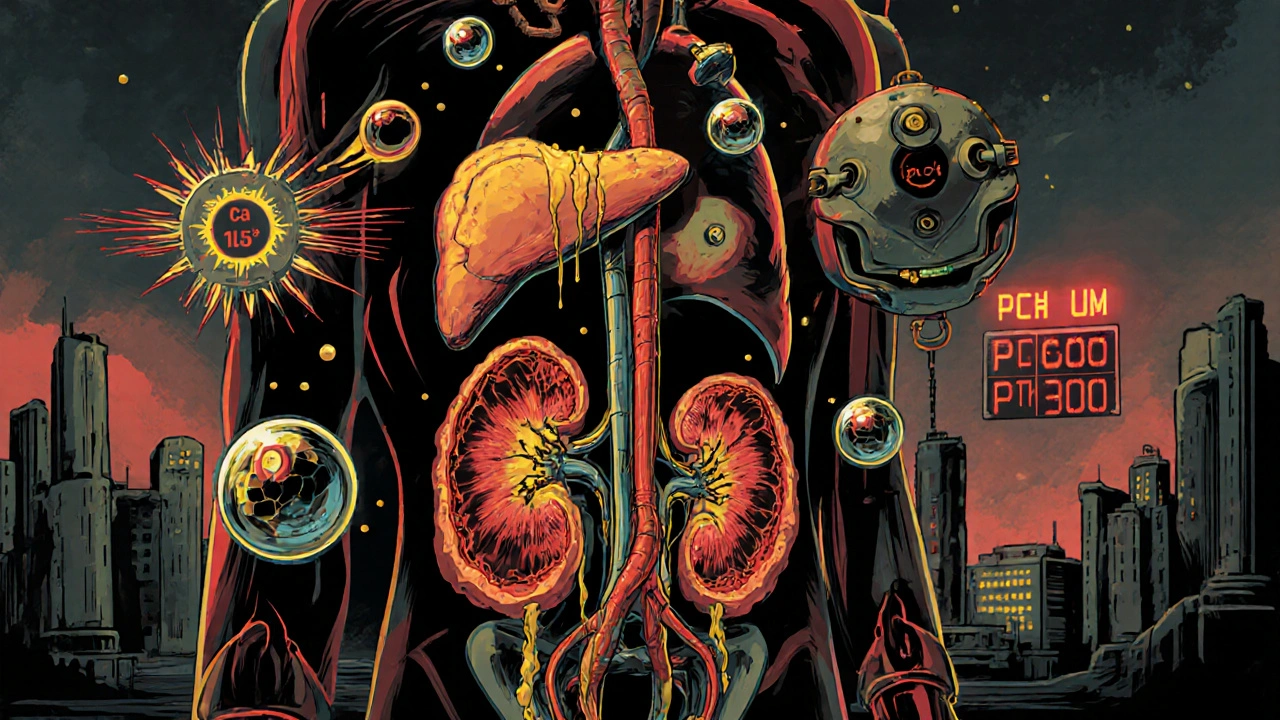
What Is CKD-Mineral and Bone Disorder?
When your kidneys start to fail, they don’t just stop filtering waste-they also lose control over your minerals. This is where CKD-MBD (Chronic Kidney Disease-Mineral and Bone Disorder) comes in. It’s not just a bone problem. It’s a full-body imbalance involving calcium, phosphorus, parathyroid hormone (PTH), and vitamin D. By Stage 3 of kidney disease, nearly 90% of patients already show signs of this disorder. By the time someone needs dialysis, it’s almost universal.
Before 2006, doctors called this "renal osteodystrophy," focusing only on bone damage. But we now know the damage goes deeper. Blood vessels calcify. Hearts weaken. Bones become brittle-even if they look dense on a scan. The real danger isn’t just broken hips. It’s sudden cardiac death. And that’s why treating just one piece-like high PTH or low vitamin D-doesn’t work. You have to treat the whole system.
The Three Broken Pieces: Calcium, PTH, and Vitamin D
Think of your body as a tightrope walker holding three weights: calcium, phosphate, and vitamin D. In healthy kidneys, these stay balanced. In CKD, the rope snaps.
First, your kidneys can’t remove enough phosphate. As GFR drops below 60 mL/min, phosphate builds up. That’s the first domino. High phosphate tells your bones to release more FGF23, a hormone that tries to fix the problem by pushing phosphate out through urine. But your kidneys are too damaged to respond. So FGF23 keeps rising-sometimes 1,000 times above normal.
FGF23 also shuts down your kidneys’ ability to make active vitamin D (calcitriol). Without it, your gut can’t absorb calcium. Your blood calcium drops. That triggers your parathyroid glands to go into overdrive. They pump out more PTH to pull calcium from your bones. This is called secondary hyperparathyroidism.
But here’s the twist: even with high PTH, your bones stop responding. It’s like shouting at a deaf person. This is called "functional hypoparathyroidism." Your bones don’t rebuild. They just crumble. Meanwhile, your arteries start hardening with calcium deposits. That’s why dialysis patients have coronary calcification scores three to five times higher than people with healthy kidneys.
What Do the Numbers Mean?
Doctors don’t guess anymore. They measure. And the targets are precise.
- Serum calcium: Keep between 8.4 and 10.2 mg/dL. Too high? You risk calcifying your heart. Too low? Your PTH spikes.
- Phosphate: Aim for 2.7-4.6 mg/dL in Stage 3-5 CKD. On dialysis, up to 5.5 mg/dL is acceptable. But every 1 mg/dL rise above that? Your death risk jumps 18%.
- PTH: Target is 2-9 times the upper limit of your lab’s normal range. For most, that’s 150-600 pg/mL. Below 150? You might have adynamic bone disease-bone turnover so slow, fractures happen without warning. Above 800? You’re in danger zone.
- Vitamin D (25(OH)D): At least 30 ng/mL. In CKD, 80-90% of patients are below this. Low vitamin D doesn’t just hurt bones-it raises your risk of dying by 30%.
These aren’t just lab values. They’re warning lights. A phosphate level of 5.8 mg/dL? That’s not "a little high." It’s a red flag for heart disease. A PTH of 900 pg/mL? That’s not "elevated." That’s a signal your bones are being eaten alive.
Bone Disease in CKD: It’s Not What You Think
Most people assume bone disease in kidney patients means osteoporosis-thin, weak bones. But it’s more complex. There are three main types:
- High turnover disease (osteitis fibrosa cystica): Caused by extreme PTH. Bones are overactive, breaking down fast. You’ll see elevated bone-specific alkaline phosphatase and PINP. Fracture risk is high. This is the "classic" form, but it’s now rare-seen in only 20-30% of dialysis patients.
- Low turnover disease (adynamic bone disease): The most common today. PTH is low (under 150 pg/mL). Bone cells are quiet. No rebuilding. No repair. Bones look normal on scans, but they’re fragile. This is often caused by too much calcium-based binder, too much vitamin D, or over-dialysis. It’s silent. Deadly.
- Mixed disease: A blend of both. About 10-20% of cases. Hard to treat because fixing one part makes the other worse.
Here’s the scary part: bone biopsy is the only way to know for sure which type you have. But it’s invasive. So doctors guess-using PTH, alkaline phosphatase, and clinical signs. That’s why so many people get the wrong treatment. You can’t treat low turnover the same way you treat high turnover. One needs more PTH stimulation. The other needs less.
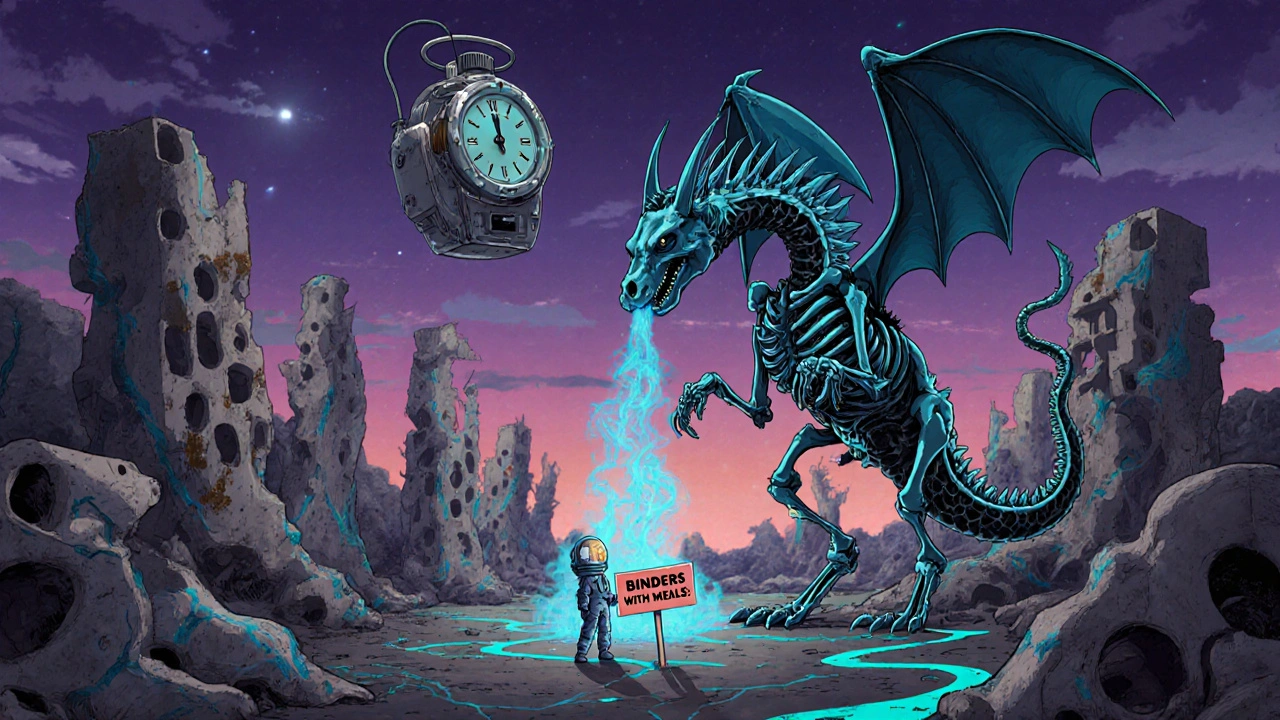
Treatment: More Than Pills
There’s no magic drug. Treatment is a balancing act.
Phosphate control: Start with diet. Limit processed foods, colas, and packaged meats-they’re loaded with hidden phosphate. Aim for 800-1,000 mg/day. But diet alone isn’t enough. That’s where binders come in. Calcium-based binders (like calcium carbonate) work-but they add calcium to your blood. That’s risky if you’re already high. So doctors now prefer non-calcium binders: sevelamer (800-2,400 mg three times daily) or lanthanum carbonate (750-3,000 mg/day). They bind phosphate in your gut without raising blood calcium.
Vitamin D: Most patients need nutritional vitamin D (cholecalciferol)-1,000 to 4,000 IU daily-to raise 25(OH)D above 30 ng/mL. Active forms like calcitriol or paricalcitol? Only if PTH is above 500 pg/mL. Why? Because they raise calcium and phosphate. In low turnover disease, they make things worse.
Calcium: Keep it in the middle. Don’t let it creep above 10.2 mg/dL. Calcium-based binders? Limit to 1,500 mg elemental calcium per day. Aluminum-based binders? Never use them. They cause brain toxicity.
Calcimimetics: If PTH stays above 800 pg/mL despite everything, drugs like cinacalcet or etelcalcetide (injectable) can help. They trick the parathyroid gland into thinking calcium is higher than it is. PTH drops 30-50%. No spike in phosphate. No calcification risk.
The New Frontier: FGF23, Klotho, and Sclerostin
Research is moving beyond calcium and PTH. Scientists now see FGF23 and Klotho as the real drivers of CKD-MBD.
FGF23 rises early-years before phosphate does. It’s the first sign your kidneys are struggling. Klotho, a protein made in the kidneys, helps FGF23 work. But in CKD, Klotho drops by 50-70%. So FGF23 goes rogue. It starts attacking your heart, causing thickening and scarring.
Then there’s sclerostin. It’s a protein that shuts down bone formation. In CKD, sclerostin levels double or triple. That’s why bones don’t heal. New drugs like romosozumab (an anti-sclerostin antibody) are in trials. In early studies, they boosted bone density by 30-40% in Stage 3-4 CKD patients.
Animal studies show that restoring Klotho cuts vascular calcification by 60%. Human trials are coming. This isn’t science fiction. It’s the next wave of treatment.
What Happens If You Ignore It?
CKD-MBD doesn’t wait. It creeps in. A 65-year-old man on dialysis might feel fine. His bones don’t hurt. His blood tests? "A little off." He skips his binders. He stops taking vitamin D. Two years later, he breaks his hip from a simple fall. Then he has a heart attack. He doesn’t survive.
That’s not rare. It’s the norm. Vascular calcification kills half of all dialysis patients. Fractures are 4-5 times more common than in healthy older adults. And low vitamin D? It’s linked to higher infection rates, muscle weakness, and depression.
This isn’t about numbers on a chart. It’s about living longer. Walking without pain. Avoiding the hospital. Getting off the dialysis machine with your heart still beating.
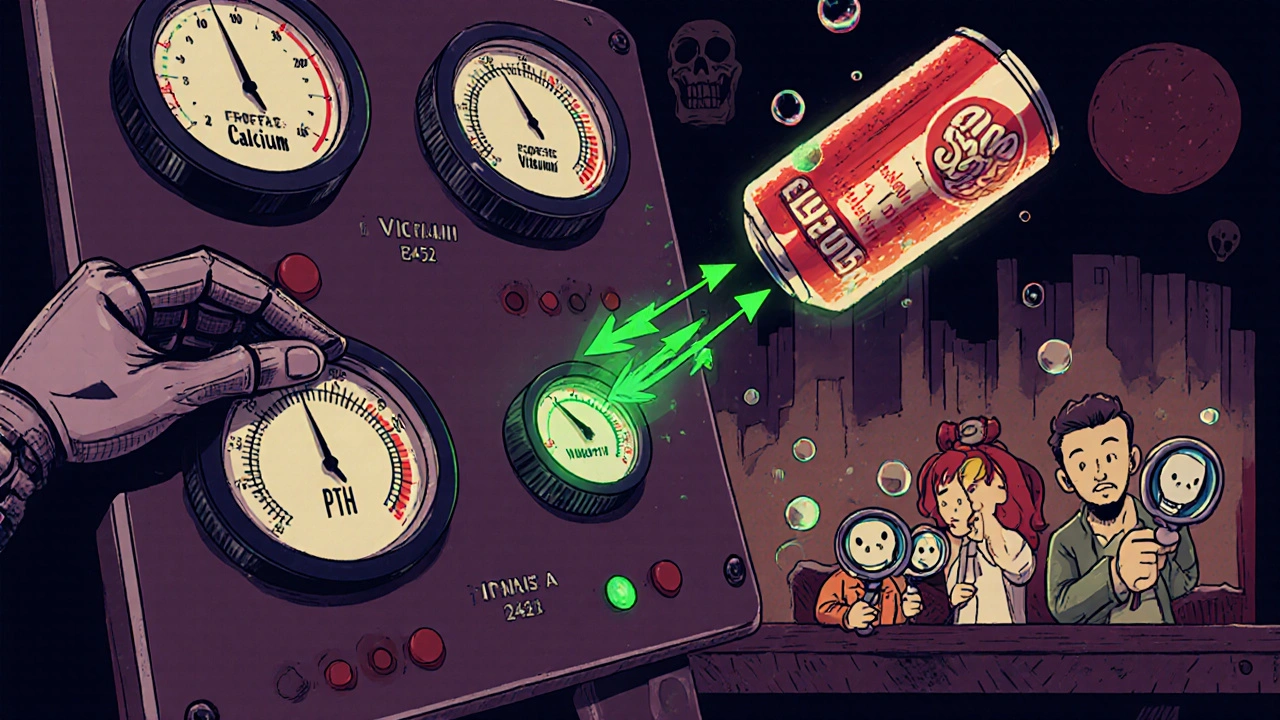
What Can You Do Today?
- Ask for your calcium, phosphate, PTH, and vitamin D levels every 3-6 months.
- Know your targets. Don’t just accept "normal"-ask what "optimal" means for you.
- Read labels. Avoid foods with phosphate additives. Look for "phos," "phosphate," or "E450-E452" on ingredients.
- Take binders with meals. Not before. Not after. With. That’s when they work.
- If you’re on vitamin D, get your 25(OH)D checked-not calcitriol. That’s the right marker.
- Don’t let PTH stay above 800. Push for calcimimetics if needed.
CKD-MBD is not a side effect. It’s a core part of kidney failure. Treat it like one.
Why This Matters for Families and Caregivers
If you’re caring for someone with CKD, you’re not just helping with meds and dialysis. You’re watching for signs of bone pain, muscle weakness, or sudden chest discomfort. You’re reading food labels with them. You’re reminding them to take binders. You’re asking the nephrologist: "Is this the right target for my loved one?"
Children with CKD are especially vulnerable. Their bones don’t grow right. Many are 1.5 to 2 standard deviations below normal height by Stage 5. That’s not just stunted growth-it’s a sign their entire mineral system is failing. Early vitamin D and phosphate control can change their life.
The Bottom Line
CKD-MBD isn’t a mystery anymore. We know the players: calcium, phosphate, PTH, vitamin D, FGF23, Klotho, sclerostin. We know the targets. We have the tools. But we still treat it like a checklist, not a syndrome.
The goal isn’t to make every number perfect. It’s to keep you alive, mobile, and out of the hospital. That means treating the whole system-not just one lab value. It means listening to your body, not just your lab report. And it means starting early. Even in Stage 3, when you still feel fine.
Because by the time you feel the pain, it’s often too late.
Laurie Sala
Okay, but can we just talk about how terrifying it is that your bones are literally being eaten alive?? I had no idea PTH could go so high and no one tells you this until you're already on dialysis. I'm 32 and my mom has CKD-she just started binders last month and I swear she looks 10 years older. Why isn't this taught in high school health class??
Lisa Detanna
Thank you for writing this. As someone who's watched my brother go from Stage 3 to dialysis in 18 months, I can tell you-this isn't just medical jargon. It's survival. I read labels now like they're treasure maps. No more soda, no more frozen meals. We started cooking everything from scratch. It's exhausting, but he's alive. And that's worth it.
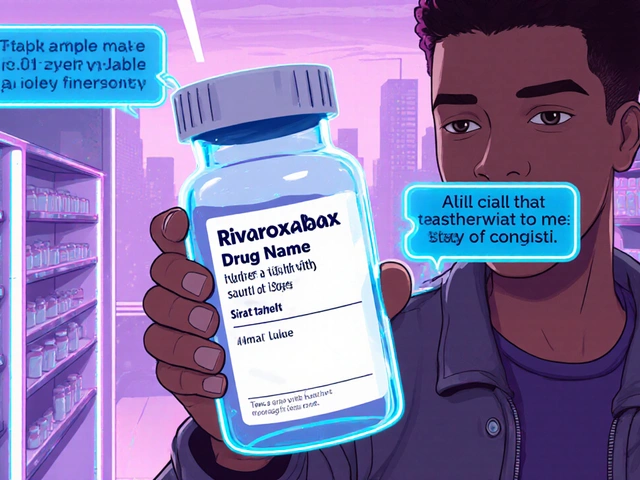

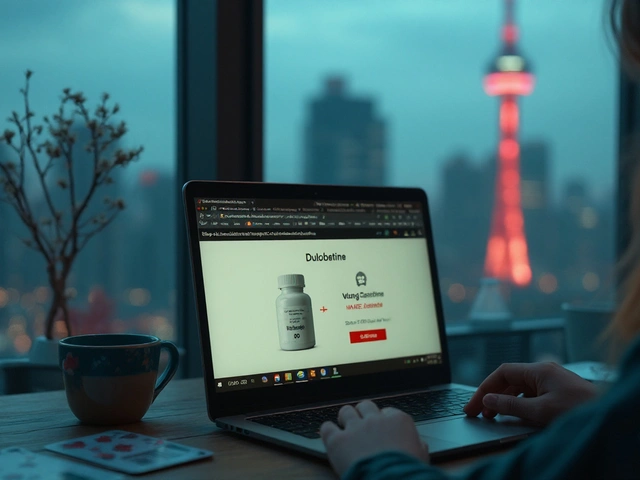


Write a comment